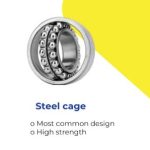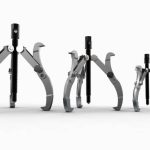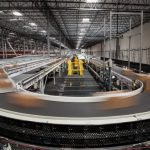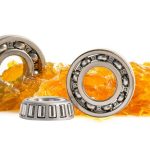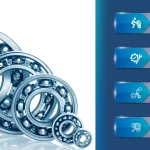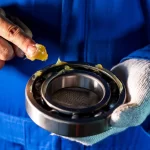The manufacturing process of bearings is a fascinating journey that involves precision engineering, advanced technologies, and meticulous attention to detail. In this comprehensive guide, we’ll take you through each step of the typical bearing manufacturing process, from the selection of raw materials to the assembly of precision components. Whether you’re a seasoned industry professional or a curious student of mechanical engineering, join us as we delve into the intricacies of bearing production and explore the technologies driving innovation in this critical sector.
Overview: The manufacturing process of bearings begins with the careful selection of raw materials and progresses through various stages of machining, heat treatment, and assembly. Each step is critical to ensuring the final product meets stringent quality standards and delivers optimal performance in a wide range of applications.
Step 1: Raw Material Selection:
The quality and performance of bearings depend largely on the raw materials used in their construction. Bearing manufacturers typically use high-quality alloy steels, such as chrome steel (52100), stainless steel, or ceramic materials, selected for their excellent wear resistance, hardness, and fatigue strength.
Step 2: Bar Stock Cutting:
Once the raw materials are selected, the manufacturing process begins with bar stock cutting. This involves cutting cylindrical bars of steel or other materials into smaller pieces, known as blanks, that will serve as the starting material for the bearing components.
Step 3: Forging or Turning
Depending on the bearing type and design, the blanks may undergo forging or turning processes to achieve the desired shape and dimensions. Forging involves shaping the blanks under high pressure and temperature to improve the material’s strength and structure, while turning uses precision machining techniques to achieve precise dimensions and surface finishes.
Step 4: Turning and Grinding
Turning and grinding are essential processes in bearing manufacturing, where the blanks are further refined to meet tight tolerances and surface finish requirements. Turning involves machining the outer and inner ring surfaces to achieve precise dimensions and concentricity, while grinding utilizes abrasive wheels to achieve the required surface finish and roundness.
Step 5: Assembly:
Once the individual bearing components are machined to specification, they are assembled into complete bearing units. This assembly process may involve press-fitting the inner and outer rings onto the rolling elements, installing cages or retainers, and applying seals or shields to protect the bearings from contaminants.
Step 6: Lubrication:
Lubrication plays a critical role in ensuring smooth operation and extending the lifespan of bearings. During the manufacturing process, bearings are lubricated with high-quality lubricants, such as grease or oil, to reduce friction, dissipate heat, and protect against wear and corrosion.
Advanced Technologies in Bearing Manufacturing
In addition to traditional machining and assembly techniques, bearing manufacturers are increasingly incorporating advanced technologies such as CNC machining, robotic automation, and digital inspection systems to improve efficiency, precision, and quality control in the manufacturing process.
These technologies enable faster production cycles, tighter tolerances, and enhanced product consistency, ensuring that bearings meet the demanding requirements of modern industrial applications.
Assembly Automation in Bearing Manufacturing:
Assembly automation plays a crucial role in streamlining the production of various bearing types. Automated assembly systems utilize robotics, conveyors, and vision systems to efficiently assemble bearing components with high speed, accuracy, and repeatability. By automating repetitive tasks and minimizing human intervention, assembly automation improves productivity, reduces labor costs, and ensures consistent product quality.
FAQ's
Which material is mainly used for bearing manufacturing?
Bearing manufacturers primarily use high-quality alloy steels, such as chrome steel (52100), stainless steel, or ceramic materials, for bearing manufacturing. These materials offer excellent wear resistance, hardness, and fatigue strength, making them ideal for demanding industrial applications.
Which bearing is mostly used?
Among the various types of bearings, ball bearings are the most commonly used due to their versatility, high load-carrying capacity, and relatively low friction. Ball bearings are widely used in a wide range of applications, including automotive, industrial machinery, and consumer electronics.
What is the basic concept of bearing?
The basic concept of a bearing is to reduce friction and facilitate smooth motion between two surfaces by providing support and guiding moving parts. Bearings typically consist of rolling elements (such as balls or rollers), enclosed within an outer and inner ring, and separated by a cage or retainer.




